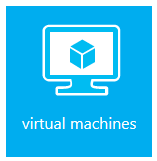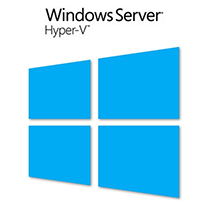Tag: Windows Server 2012
 Traditionally Windows VMs (virtual machines) in Azure would include a Windows Server Datacenter license. The cost of this license was built into the hourly/monthly fee for that VM. This made systems easy to roll out using the GUI wizards and made licensing a cinch. If you are moving existing virtual machine workloads to the cloud, this can be expensive since you paying again for licenses you’ve already purchased.
Traditionally Windows VMs (virtual machines) in Azure would include a Windows Server Datacenter license. The cost of this license was built into the hourly/monthly fee for that VM. This made systems easy to roll out using the GUI wizards and made licensing a cinch. If you are moving existing virtual machine workloads to the cloud, this can be expensive since you paying again for licenses you’ve already purchased.
According to their new announcement, Microsoft says “now you can move your existing Windows Server licenses to Azure when you extend your datacenter to the cloud. With the Azure Hybrid Use Benefit, you can use on-premises Windows Server licenses that include Software Assurance to run Windows Server virtual machines in Azure at the base compute rate.” Continue reading
Permanent link to this article: https://www.robertborges.us/2017/06/windows/save-money-with-azure-vms-by-using-azure-hybrid-use-benefit/
Have you ever noticed how a server tends to slow down over time? No, this isn’t simply your server getting old and tired. This is often caused by the same server needing more and more memory (RAM) as time passes. There are good reasons why this happens, and ways to minimize the effects. Here are a few common reasons why a server requires more memory as time goes on. Continue reading
Permanent link to this article: https://www.robertborges.us/2014/08/windows/windows-server-2008-r2/why-do-servers-need-more-memory-as-time-goes-on/
Exporting a Hyper-V VM (virtual machine) creates a full copy of that VM. This can be used as an easy way to create an ad-hoc backup or an archive. An export can also contain all of the existing checkpoints that exist, so it is a really helpful tool during deployments, migrations, and upgrades. Continue reading
Permanent link to this article: https://www.robertborges.us/2014/07/virtualization/export-a-running-virtual-machine-using-powershell/
When deleting user profiles, it is advisable to use the built-in GUI (graphical user interface) interface in Windows (Start >> System >> Advanced System Settings >> User Profile – Settings). This should delete all references in the registry, and the user’s profile folder (normally located in C:\Users). But what if this doesn’t work as it should? Continue reading
Permanent link to this article: https://www.robertborges.us/2014/07/questions-answers/how-to-delete-a-user-profile-from-the-registry/
 Though often a less frequently used feature of Hyper-V, the import and export functions offer some very useful benefits. In Windows Server 2012 R2 these benefits get even better. I will explain how this functionality works, and why it is useful. I’ll also discuss how these functions are very different from the commonly used checkpoints in Hyper-V. Continue reading
Though often a less frequently used feature of Hyper-V, the import and export functions offer some very useful benefits. In Windows Server 2012 R2 these benefits get even better. I will explain how this functionality works, and why it is useful. I’ll also discuss how these functions are very different from the commonly used checkpoints in Hyper-V. Continue reading
Permanent link to this article: https://www.robertborges.us/2013/10/windows/windows-server-2012/importing-exporting-hyper-v-virtual-machines-in-windows-server-2012-r2/
 The past few years Microsoft has been on a trend of releasing free eBooks to the IT-Pro and Developer community. These are a good free way to stay ahead of the curve and learn what’s new in the newest version of Windows Continue reading
The past few years Microsoft has been on a trend of releasing free eBooks to the IT-Pro and Developer community. These are a good free way to stay ahead of the curve and learn what’s new in the newest version of Windows Continue reading
Permanent link to this article: https://www.robertborges.us/2013/09/learning-resources/free-ebook-introducing-windows-server-2012-r2-preview-release/
Live Migration is the process of moving a virtual machine (VM) from one Hyper-V virtualization host to another Hyper-V host without any perceived downtime of the VM being moved. Continue reading
Permanent link to this article: https://www.robertborges.us/2013/08/windows/windows-server-2012/windows-server-2012-feature-share-nothing-live-migration-in-hyper-v/

SHUTDOWN Notification in Windows 8
I was recently surprised by how many seasoned IT Pros didn’t know that they had the ability to shut down a server or workstation from the command line using the SHUTDOWN command. Not only is it possible to shut down the local machine from the command line, but it is also possible to shutdown other machines on your domain as well. Continue reading
Permanent link to this article: https://www.robertborges.us/2013/07/windows/shutdown-computers-from-command-line/
SYSPREP is a Windows utility that allows a computer to be generalized. If you’re restoring system images (using Ghost or a similar technology) to multiple PCs on a network, then it is imperative that you first run SYSPREP to generalize the system. Continue reading
Permanent link to this article: https://www.robertborges.us/2013/07/windows/using-sysprep-in-audit-mode-before-creating-a-system-image/
Microsoft has released the preview of Windows Server 2012 R2 to the public. This is available for download for users with a Live ID at Microsoft’s Windows Server 2012 Preview site.
If you’re not familiar with Microsoft’s “Preview Releases”, then let me explain a little. The preview is not a finished copy, but rather a beta version which contains most (if not all) of the features and improvements we should expect to see in the final version for GA (general availability). Continue reading
Permanent link to this article: https://www.robertborges.us/2013/06/windows/windows-server-2012/windows-server-2012-r2-blue-preview-available-for-download/

Task Manager in Windows 8 (less details view)
Regardless of how much time and money software companies put into writing their programs, we still have application crashes. An application crash is when a program or part of the operating system ceases to function properly. Preventing application crashes is usually difficult since the only way to permanently ensure you never get a crash again is to fix the bug in the software. We may not be able to prevent these crashes from happening but dealing with a crashed application, in Windows 8 or Windows Server 2012, is easier to deal with than many realize.
If you have a program which has crashed, you can close that program from the Windows Task Manager in Windows 8 or in Windows Server 2012. If you have used Task Manager in previous versions of Windows, you will see significant differences in the new version. By default, Task Manager displays a minimalist view (called less detail view), which only displays applications running (not processes).
You can access Task Manager by pressing the <CTRL>+<ALT>+<DEL> keys on your keyboard. You will either be brought directly into the Windows Task Manager or to a menu where you can open Task Manager. Once Task Manager has opened, click on the Processes tab. This will display all processes running on your computer. If you do not see any tabs in Task Manager, this is because Task Manager is in its less detail mode. You can change to the detail mode by simply clicking on the “More Details” button at the bottom of the window.

Task Manager in Windows 8 (more details view)
To close the process for the hung or crashed application, highlight the appropriate line (for Microsoft Word choose WINWORD.EXE), then click on the End Process button. You will be prompted to make sure you really want to close this program. Click on the End Process button on this confirmation if you are sure. If there are multiple lines for the same program, make sure you highlight each (one at a time) and end that process as well.
Permanent link to this article: https://www.robertborges.us/2013/05/windows/windows-8/closing-a-crashed-or-hung-application-using-the-windows-8-task-manager/
As a seasoned virtualization expert (mostly with Hyper-V environments), I totally agree with the concept of building your VMs (virtual machines) and virtualization hosts to meet a particular need.
Often, I talk to SQL DBAs (database administrators) or Exchange administrators who swear that these platforms can NEVER be virtualized. This line of thinking is so wrong that Microsoft itself has bet their business around it (e.g., Office 365, Microsoft.com, etc.).
The most important piece of advice I give to virtualization newcomers is to treat a VM like you would a physical server. If a physical Exchange server needs 16GBs of memory and 4 CPUs, then building a VM with only a single virtual processor and 2GB of memory is going to result in a bad user experience, obviously.
HDD (hard disk drive) performance is always a concern with VMs. If you are creating a VM to run a disk intensive SQL server, then you will certainly care about your disk performance. With the more recent versions of Hyper-V, there is little noticeable performance reduction when choosing dynamically expanding VHD (virtual hard disk) vs. using a fixed size VHD. The big downside is that you now have to monitor and manage your storage on the host since your VMs can quickly consume physical space.
If extra disk performance is really needed, there is an option of using a pass-through disk. Pass-through disks will use an unused volume on the physical Hyper-V host as if that volume were its own. With pass-through disks you’ll get true hardware-level performance. The downside is that your VM is now tied to this physical storage making it difficult (or impossible) to migrate to a different host… so plan accordingly.
Permanent link to this article: https://www.robertborges.us/2013/05/virtualization/getting-better-performance-for-your-virtual-machines/
There has always been a need to consolidate disks into a single large disk in order to store more data than any single drive can contain. In the past we used hardware or software RAID to accomplish this. Hardware RAID can be expensive due to the extra controller needed. Software RAID is slow, and requires all disks to be identical.
Continue reading
Permanent link to this article: https://www.robertborges.us/2013/04/windows/windows-server-2012/windows-server-2012-feature-storage-spaces/
For mission critical systems, we often want to try to achieve the highest level of up time as possible, and the best disaster recovery strategy. Often this involves expensive software which replicates servers or data for failover purposes. This means Continue reading
Permanent link to this article: https://www.robertborges.us/2013/04/windows/windows-server-2012/windows-server-2012-new-feature-hyper-v-replica-for-failover/
One of the biggest limitations of Hyper-V in Windows Server 2008 R2 was that it didn’t support storing a Virtual Hard Disk (VHD) on physical disks larger than 2 TB. This was actually due to the sector size of the physical disk which was supported by Hyper-V. Larger disks tended to use 4096-byte sectors (also known as 4k sectors). Continue reading
Permanent link to this article: https://www.robertborges.us/2013/03/windows/windows-server-2012/windows-server-2012-new-feature-large-disk-support-for-hyper-v/
![]() Traditionally Windows VMs (virtual machines) in Azure would include a Windows Server Datacenter license. The cost of this license was built into the hourly/monthly fee for that VM. This made systems easy to roll out using the GUI wizards and made licensing a cinch. If you are moving existing virtual machine workloads to the cloud, this can be expensive since you paying again for licenses you’ve already purchased.
Traditionally Windows VMs (virtual machines) in Azure would include a Windows Server Datacenter license. The cost of this license was built into the hourly/monthly fee for that VM. This made systems easy to roll out using the GUI wizards and made licensing a cinch. If you are moving existing virtual machine workloads to the cloud, this can be expensive since you paying again for licenses you’ve already purchased.




